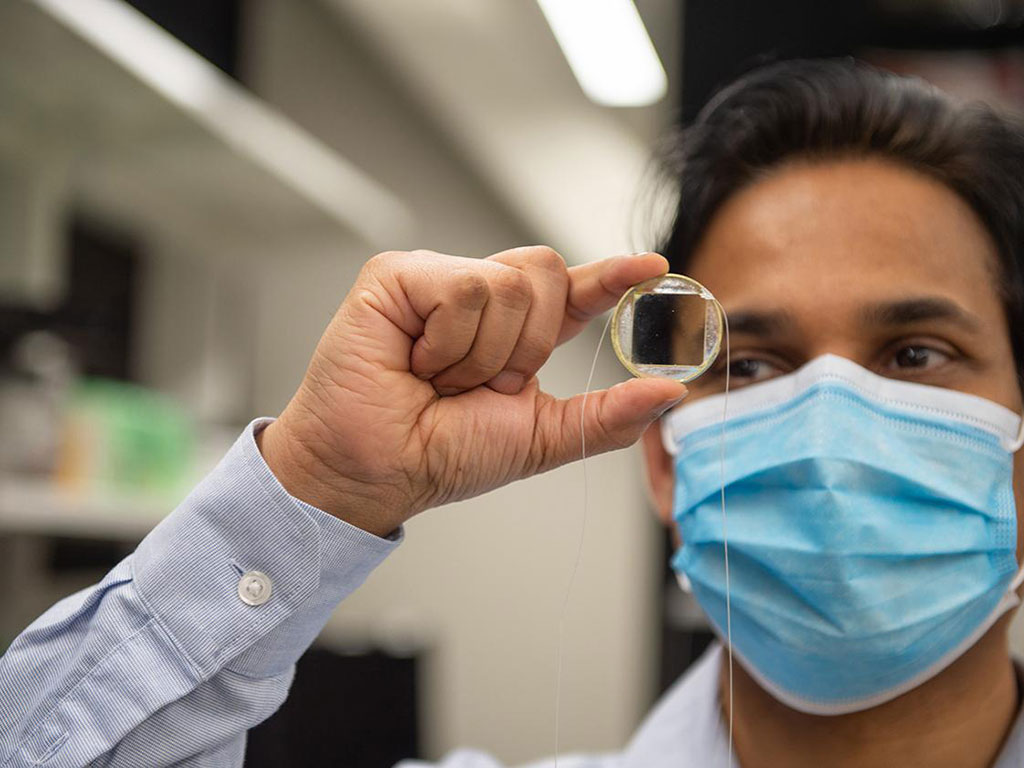Transparent, Biocompatible Ultrasound Transducer Chip Improves Cell Stimulation and Imaging
Posted on 28 Feb 2022
A transparent, biocompatible ultrasound transducer chip, that when hooked to power, stimulates cells and could have implications for future cancer and stem cell research.
A team of researchers at Penn State (University Park, PA, USA) has developed an easier, more effective way to harness ultrasound scans, best known for monitoring pregnancies or imaging organs, for biomedical applications by using it to stimulate cells and direct cell function. The team has created a transparent, biocompatible ultrasound transducer chip that resembles a microscope glass slide and can be inserted into any optical microscope for easy viewing. Cells can be cultured and stimulated directly on top of the transducer chip and the cells’ resulting changes can be imaged with optical microscopy techniques. Future applications of the technology could impact stem cell, cancer and neuroscience research.

The researchers miniaturized the ultrasound stimulation setup by creating a transparent transducer platform made of a piezoelectric lithium niobate material. Piezoelectric materials generate mechanical energy when electric voltage is applied. The chip’s biocompatible surface allows the cells to be cultured directly on the transducer and used for repeated stimulation experiments over several weeks. When connected to a power supply, the transducer emits ultrasound waves, which pulse the cells and trigger ion influx and outflux.
To test the setup, the research team cultured bladder cancer cells on the chip. They then inserted fluorescent calcium indicators into the cells to allow researchers to clearly see dynamic changes in cell calcium signaling under the microscope during stimulation. Through the bladder cancer cell study, the researchers established proof-of-concept for the new transducer setup. But they can extend these findings to use the transducer setup in potential future applications, such as stem cell differentiation, mechanosensitive neuromodulation, drug delivery and the opening of the blood-brain barrier. The ultrasound stimulation chip is low-cost, easy to fabricate, compact and scalable in size, and disposable and reusable.
“This simple setup will be invaluable for researchers interested in modulating cells and tissues with an ultrasound,” said Pak Kin Wong, professor of biomedical engineering, mechanical engineering and surgery at Penn State and co-author on the paper. “It can be used to explore novel therapeutic ultrasound applications, such as focused ultrasound immunotherapy.”
Related Links:
Penn State














